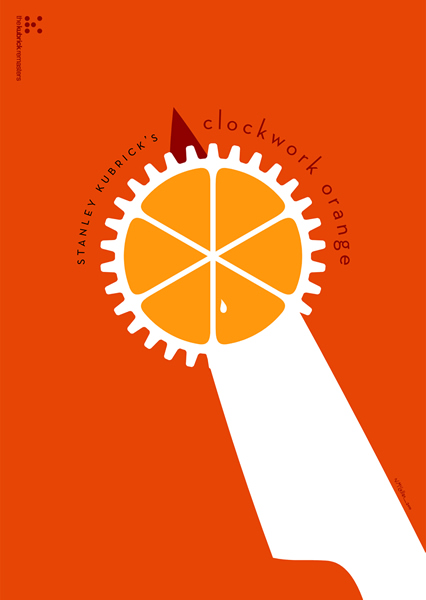
NJ McLellan A Clockwork Orange
http://www.thegirlwhocriedtruck.com
- Œuvres sur Orange mécanique (45)
- Œuvres de NJ McLellan (13)
- Œuvres sur le thème L'icône Kubrick (78)
- Œuvres sur le thème Color Me Kubrick (43)
Like a pair of old shoes on the feet of a ten-year-old, I had to grow into Kubrick. In love with cinema from a young age, I would hear people talk of 2001: A Space Odyssey in hushed, reverent tones, the same way people talk of Sgt. Pepper or The Catcher in the Rye. I first saw 2001 when I was 11 or 12, and though I was mesmerised by its beauty and its unnerving evocation of loneliness, I felt somewhat left out, a kid eavesdropping on a conversation he couldn't comprehend. It was almost as if the film was hiding something from me.
When I saw Eyes Wide Shut 8 years later (long after it was originally released), with new eyes, I found myself drawn into a vivid world of light and shadow as tangible and enthralling as my own skin. I knew that I had to give 2001 another chance. The second viewing awoke the same feelings of wonder and desolation and hope, but a veil seemed to lift and I was inside the film, feeling it happening around me, buzzing in my head. I may not have fully understood the events of the story, but the experience was visceral, electric. It left its mark and I had to have more. So I plunged into The Shining, Full Metal Jacket, Dr. Strangelove, Barry Lyndon, each time falling through universes both delicate and violent, each time completely enraptured.
In his lifetime, Kubrick made only 13 features, a body of work that appears pale and unproductive in comparison with some of his contemporaries. But every one of Kubrick's films is finely painted, sweated over, assembled with an incisive feel for the language of the screen that reflects the talent of a skilful and passionate storyteller.
That's what a Kubrick film is: a great story, told with vivacity and skill, sometimes surreal, often delirious. Challenging. Beautiful. Compulsive. Hypnotic.
Having made pictures sparked by the films I love for nearly ten years, the time came when I had to pay tribute to Stanley Kubrick. The posters began life as simple black-and-whites, but after I had developed a few of the concepts, I realised that they needed to reflect the colour of the films themselves. And so, the work began for real. I tried to create something that links closely with Kubrick's work and that is driven by ideas: smart and sexy, visual and reflective; images worthy of the wonderful films that inspired them. The final poster is for A.I., the film Kubrick had been developing when he passed away. Although it was completed by Steven Spielberg, Kubrick's influence can be felt in the film's veins. I felt it apt, then, to finish the series with this graphic of David's cybernetic eye, wide open, ready to let the wonders leak in.